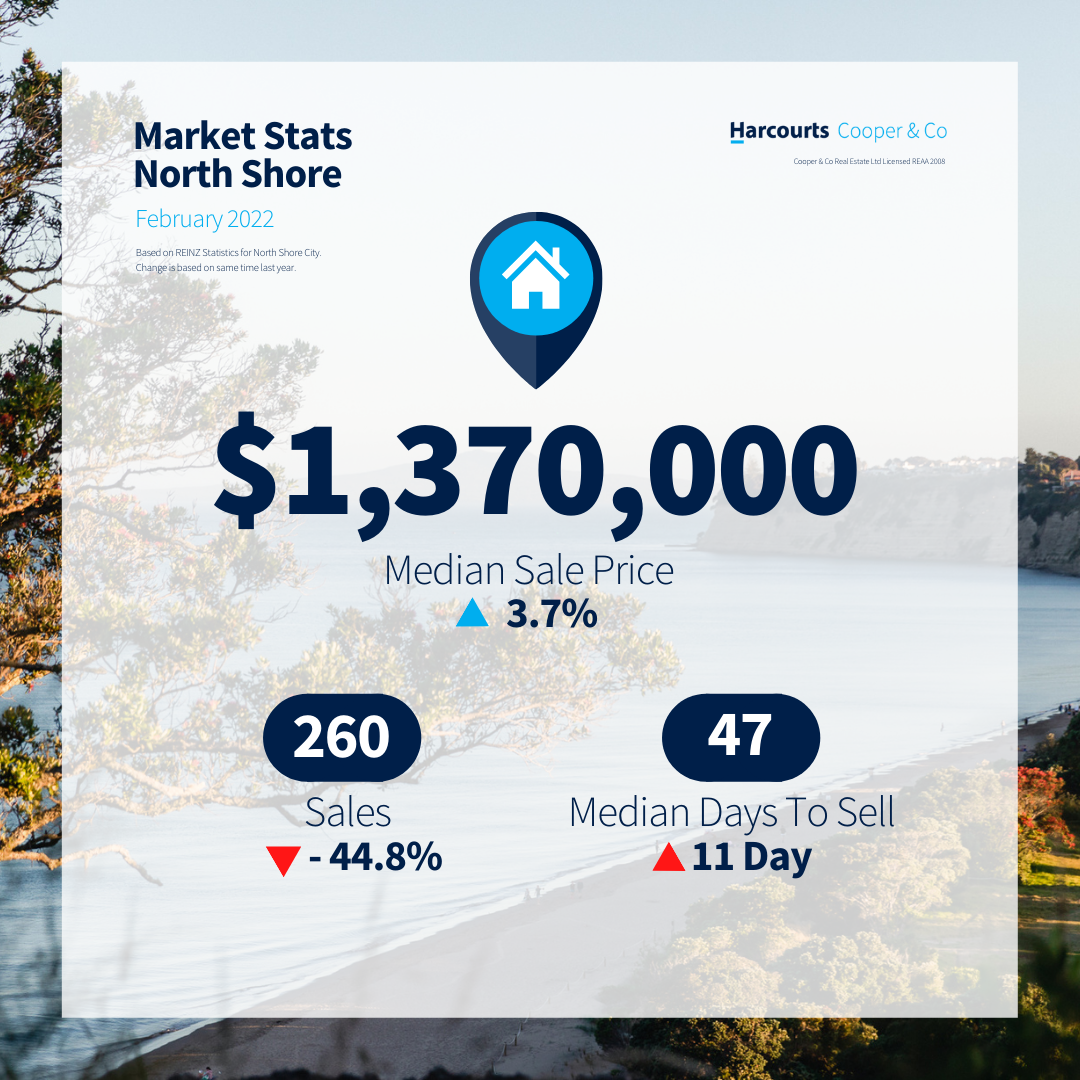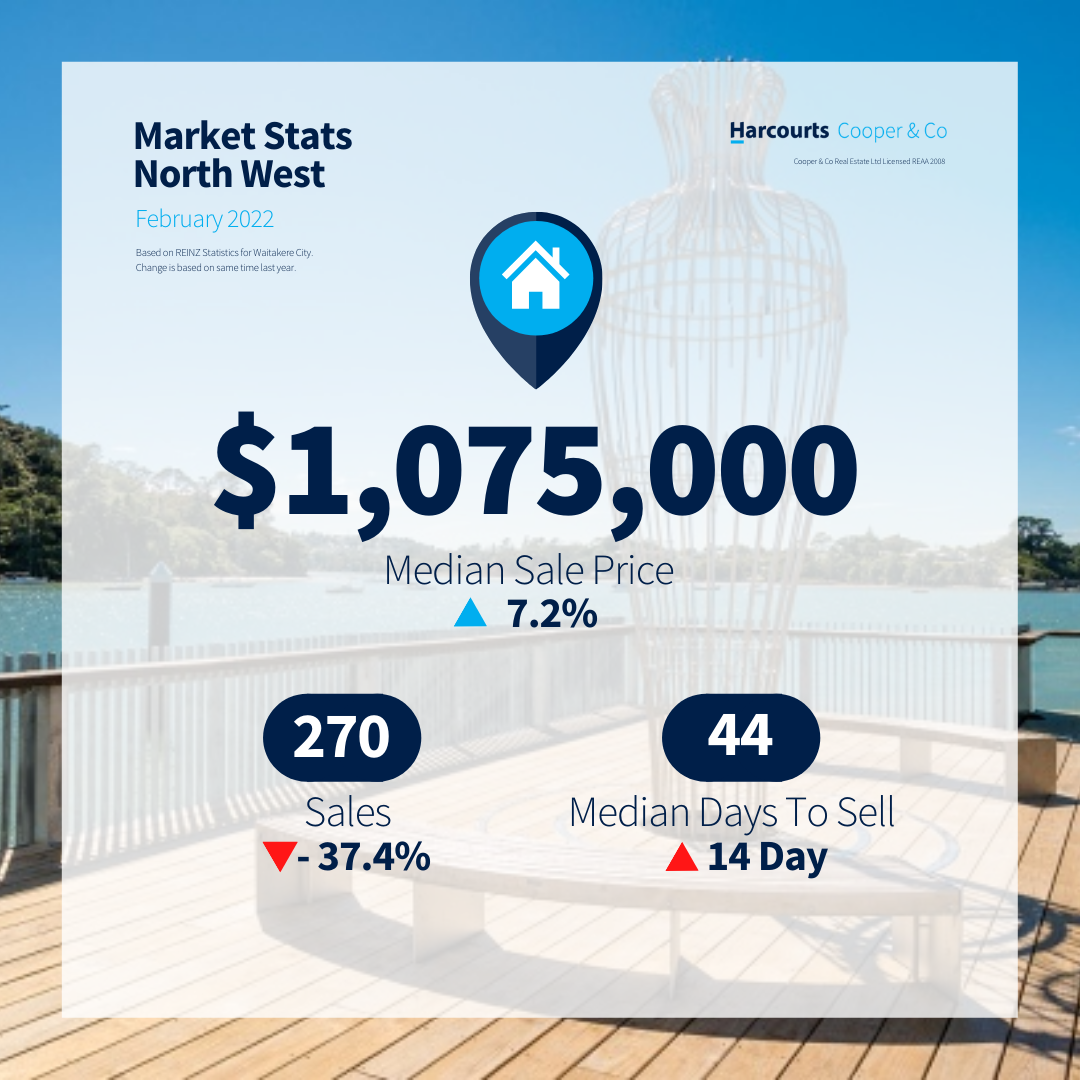
Property market continues to adjust
Last year saw house prices rise significantly with Auckland hitting its peak in November – a median of $1,300,000. This represented a staggering increase of 13% from the 6 months prior. Factors contributing to this were a housing supply shortage, historically low interest rates and easy access to lending.
2022 has seen rising mortgage rates, a tighter credit environment and increase in housing supply all leading to a decrease in price growth.
Last month Auckland saw negative annual median price growth for the first time since October 2019. A decrease of 2.2% year-on-year to $1,125,000 – down from $1,150,000 in May last year.
A look at our local markets saw varied price growth. Rodney’s median price increased year-on-year to $1,290,000, up 13.2%. The North West median remained unchanged at $1,050,000 and the North Shore decreased 1.9% to $1,305,000.
While price growth stats were varied, a decrease in sales volume was consistent among the three areas: -37% in Rodney, -28.7% in the North West and -29.6% on the North Shore.
Buyers continue to make considered purchasing decisions, resulting in an increase in the median days to sell: 43 days for Rodney and the North Shore, and 45 days for the North West.
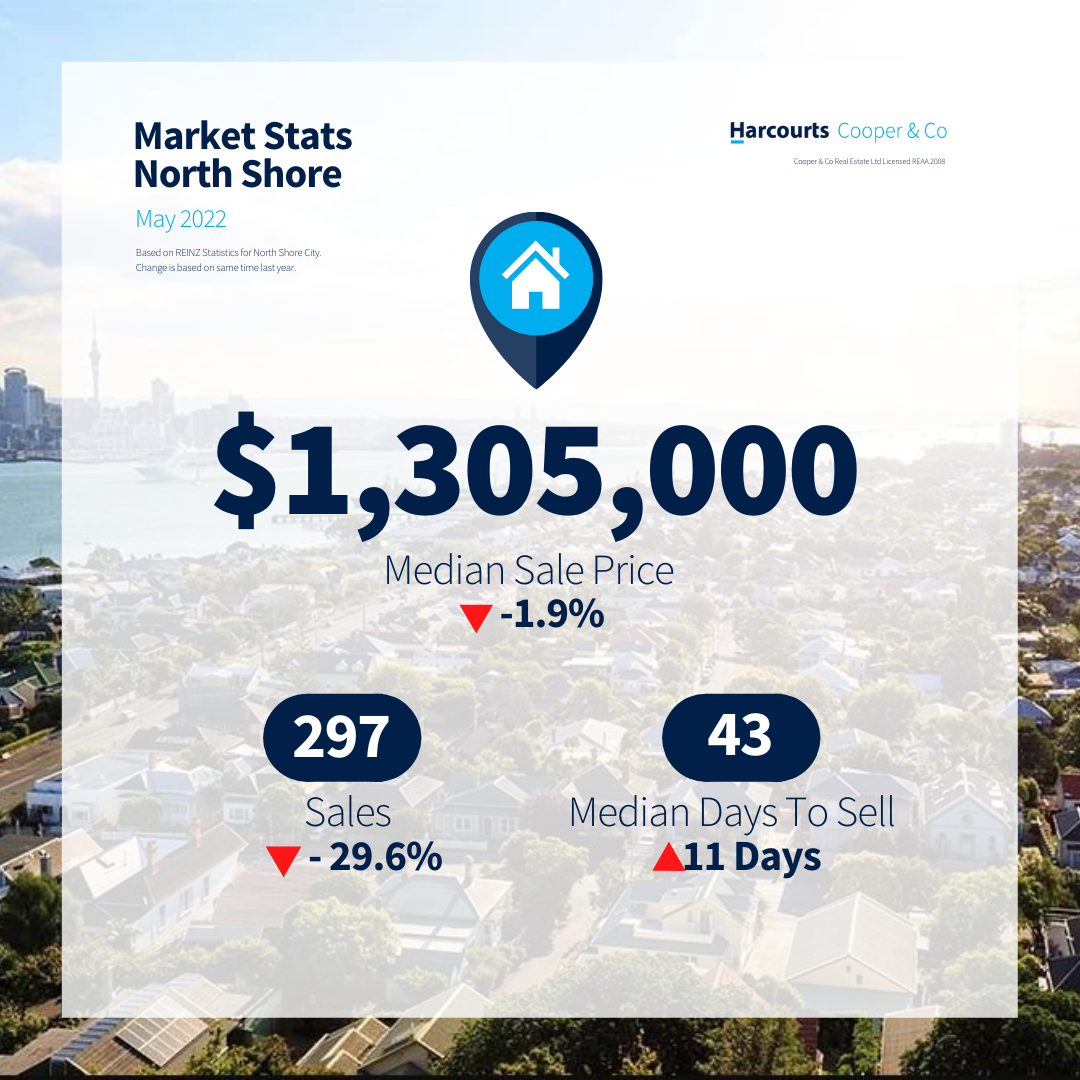
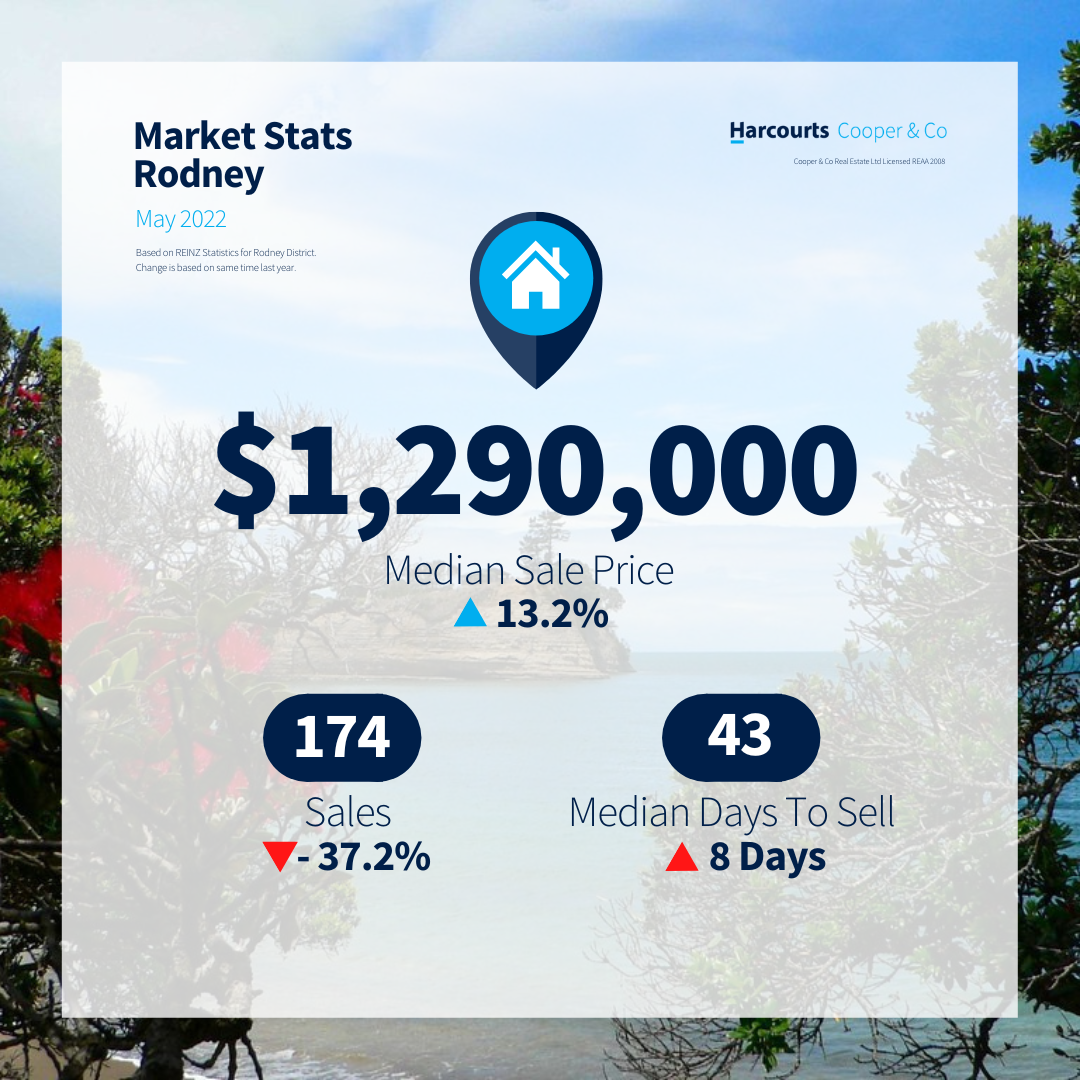
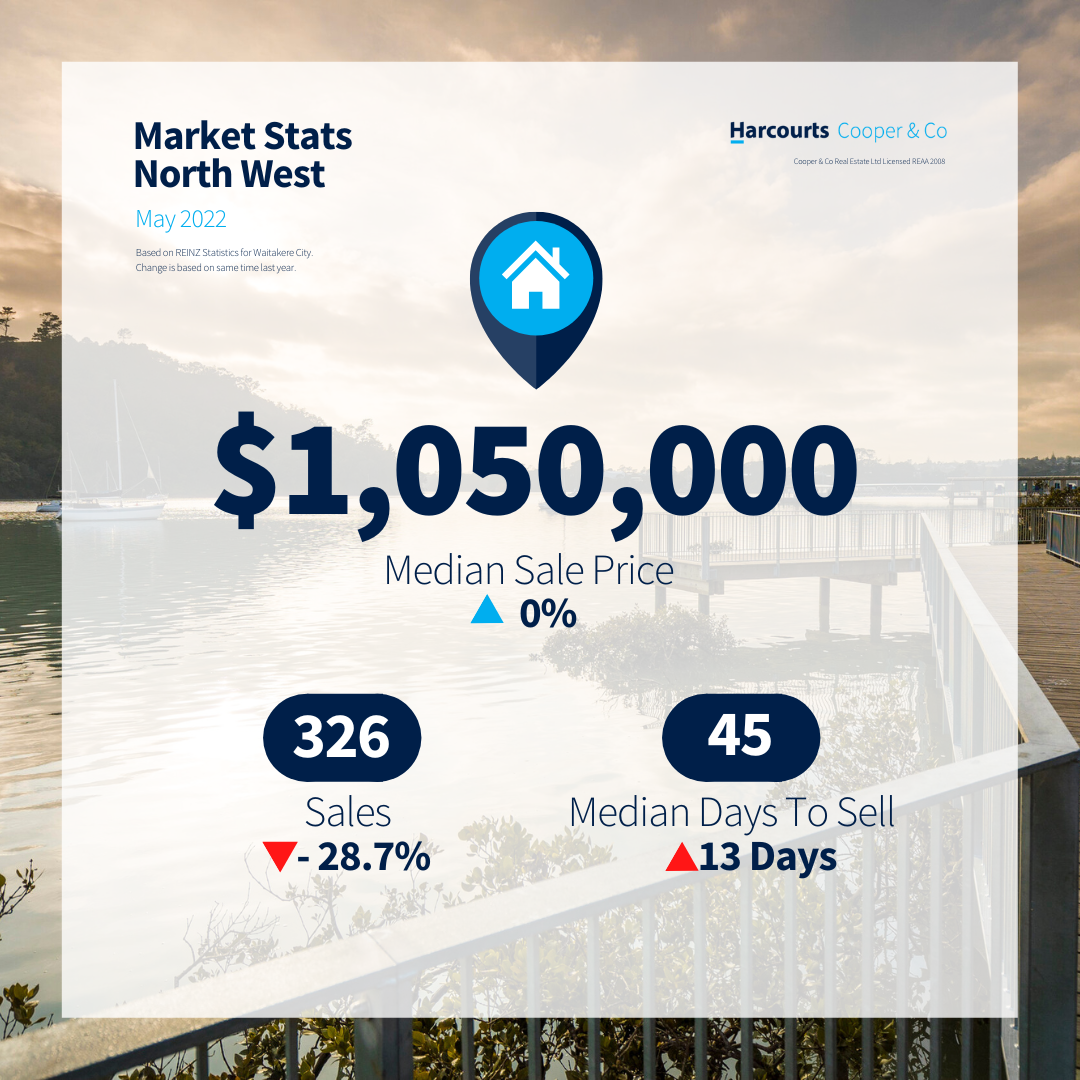

Market eases into the winter months
Residential sales activity slowed further in April as the market settled into its current rhythm.
Sales volume New Zealand-wide decreased annually by 35%. Auckland also saw a decrease in the activity of 41.3%. As did our local markets – the North Shore and North West – seeing a decrease of 43% and 36.5% respectively.
Although sales volume eased significantly, price growth remained moderate with the median sale price for the North Shore increasing 11.3% year-on-year and the North West seeing a median increase of 8.9%.
In April it’s not uncommon to see a drop in sales numbers coming off the back of March – one of the strongest months in the annual property market cycle. This is further accentuated by a number of public holiday weekends.
As properties remain on the market for longer, buyers are given more choice – resulting in prices easing and sales volume decreasing. The median days to sell in April for the North Shore increased by 9 days to 41. The North West saw an increase to 37 days, up 8 days from April 2021.
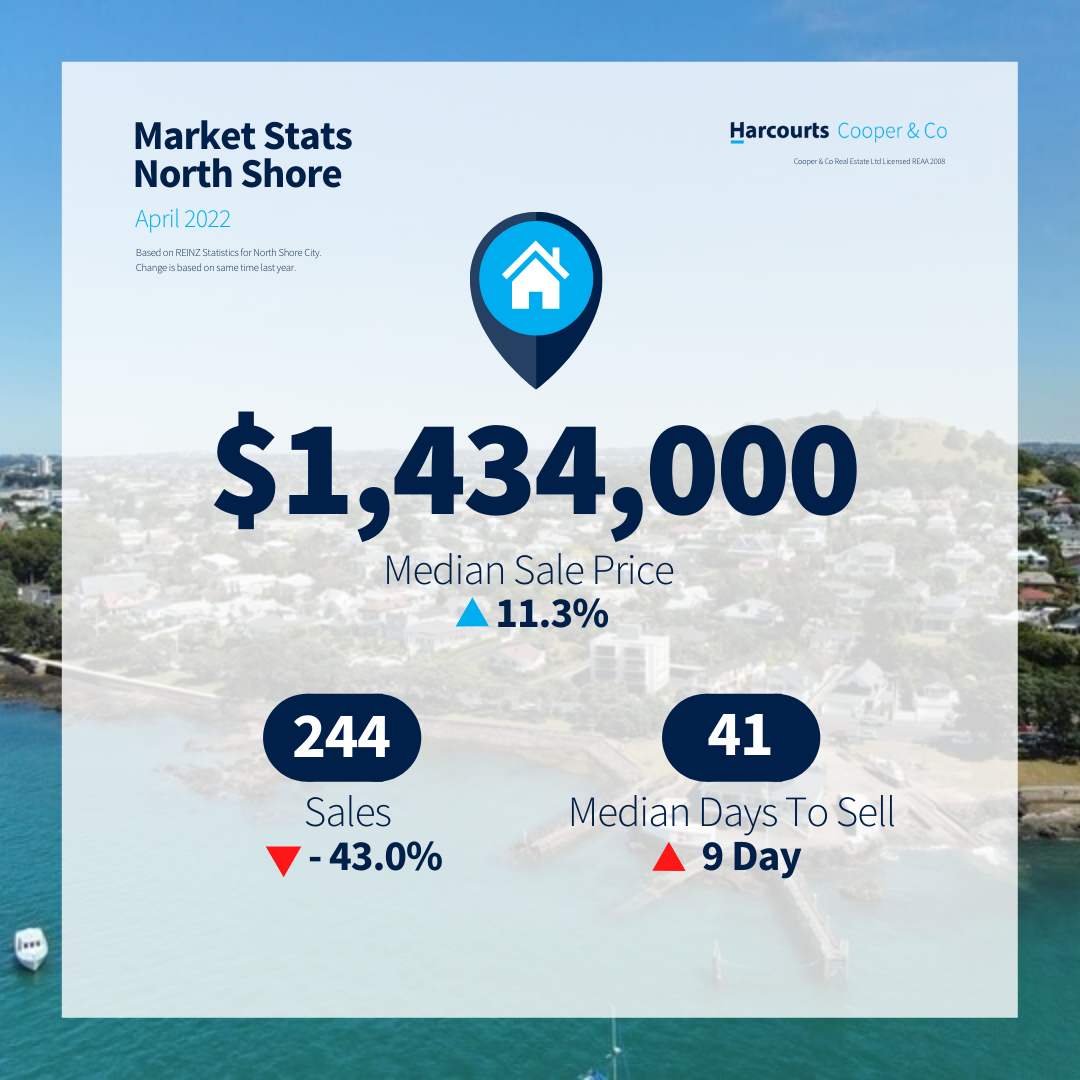
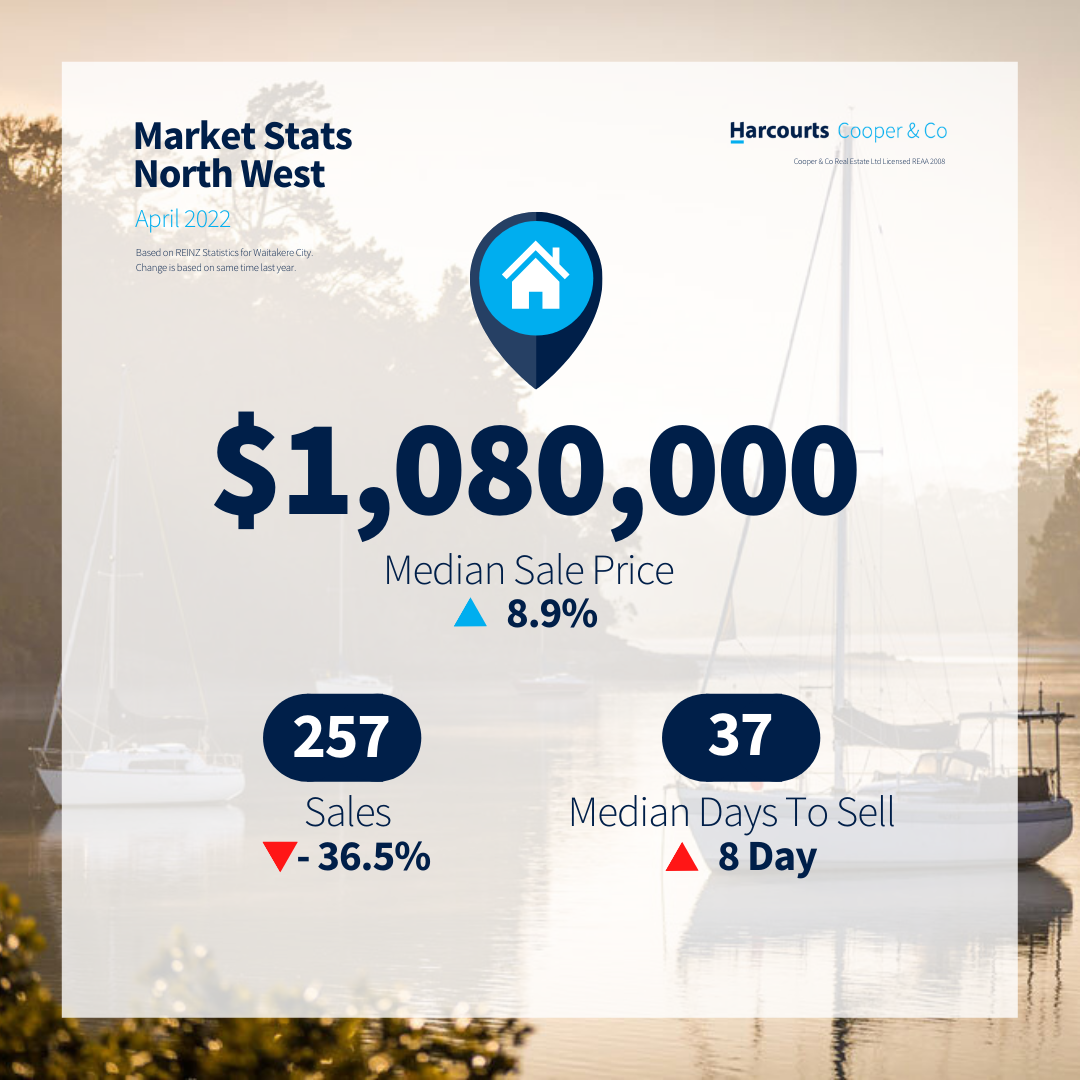

Sales volume decelerates as property prices hold
The number of residential property sales across New Zealand eased 33.5% in March from this time a year ago.
The Auckland market decreased 41% year-on-year, much in line with our local markets, with the North Shore seeing a 40.7% decrease in sales and a 41.1% in the North West.
Despite the reduced number of sales, prices are holding albeit with the rate of price growth slowing. The Auckland median price increased 6.7% year-on-year to $1,200,000. While the North Shore showed signs of slowing – a 1.8% increase year-on-year to $1,380,000 and a 10.7% rise to $1,100,000 for the North West.
The deceleration in price growth can be attributed to a number of factors – tighter lending restrictions, LVRs, inflation and increasing interest rates.
As the market adjusts to the new normal, sellers are taking their time bringing their price expectations in line with the market. This, coupled with buyers willing to wait for the right property and negotiating on price has resulted in a marked effect on sales volumes.
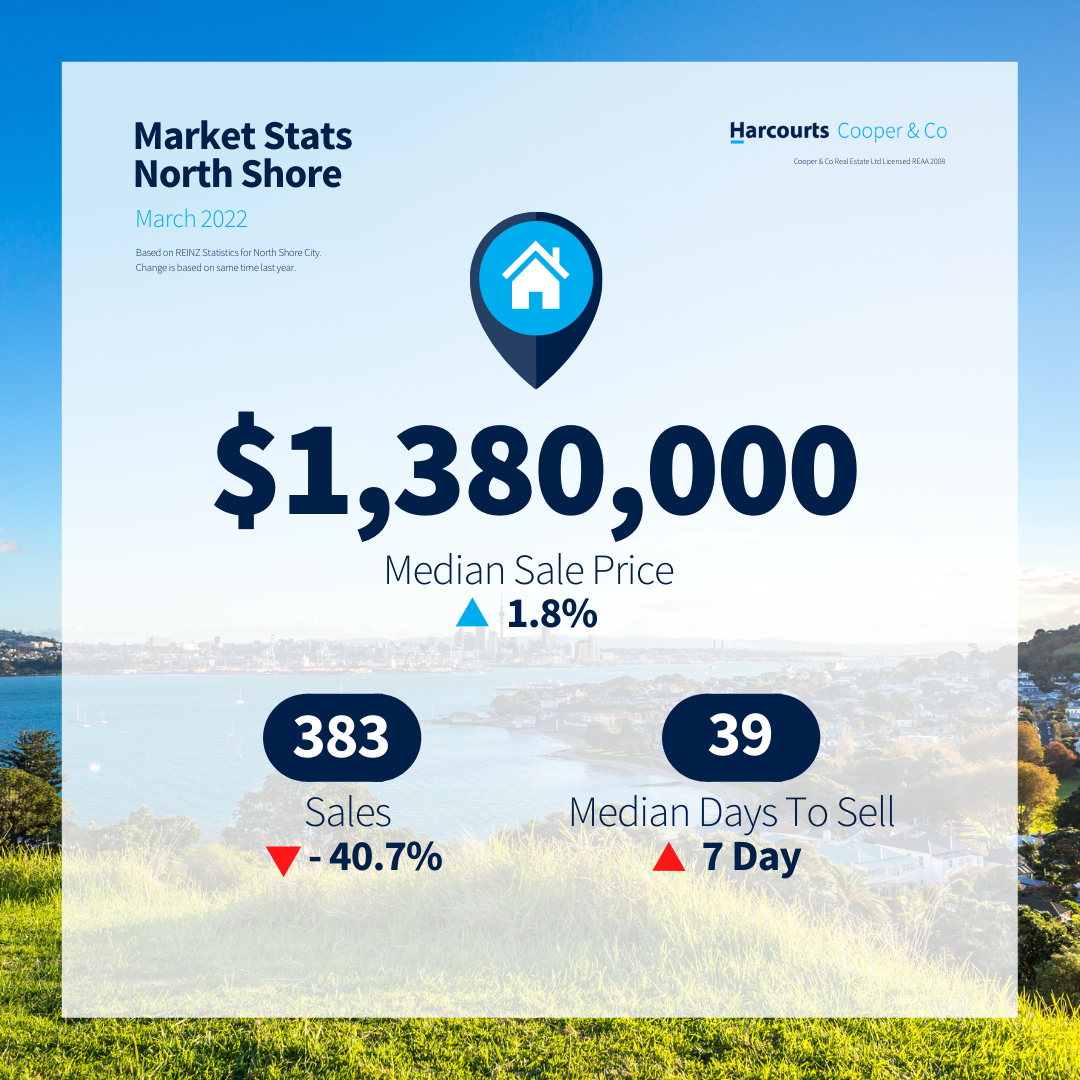
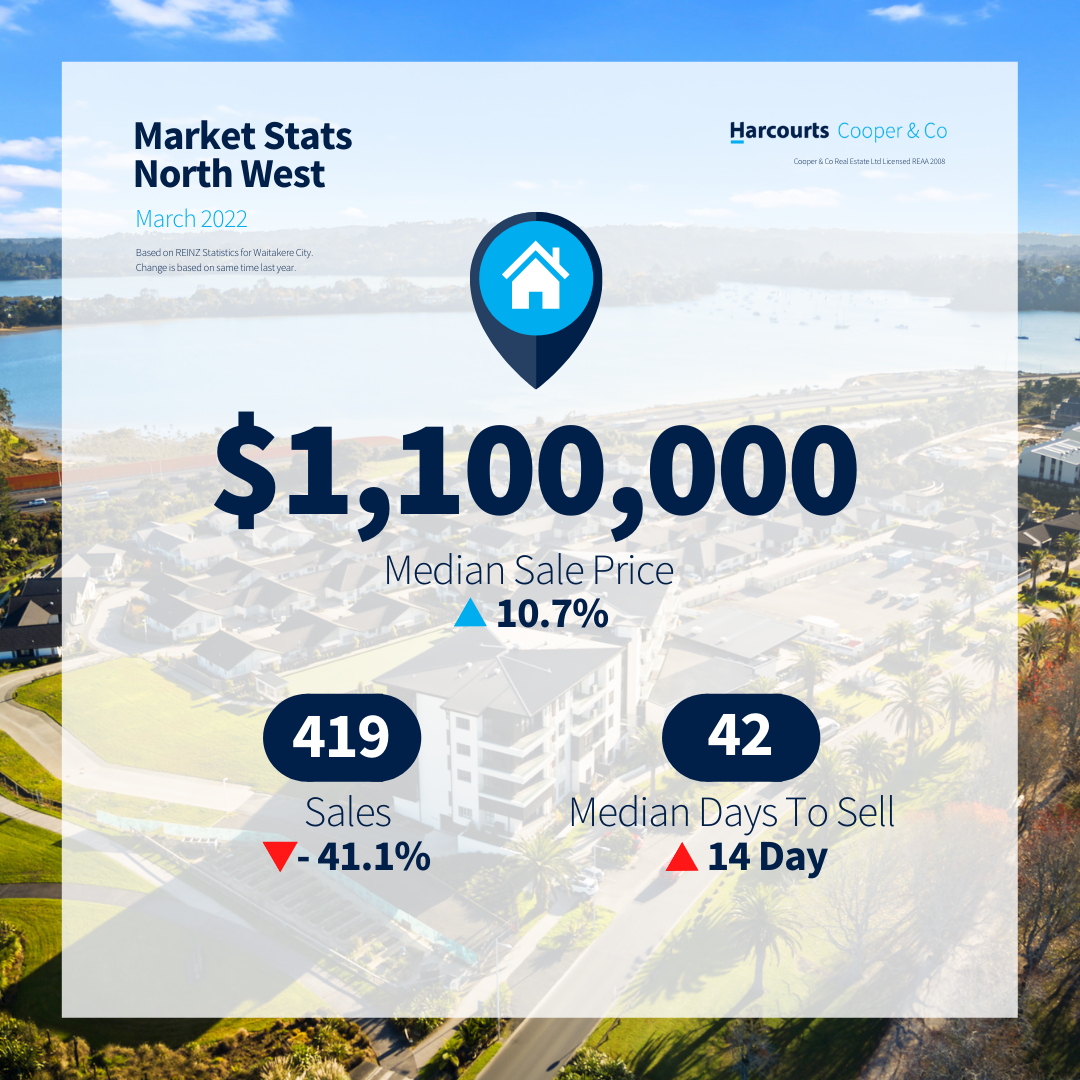

Steady market presents opportunities
A notable cooling in the market is reflected in February’s Real Estate Institute of New Zealand data. This highlights opportunities for buyers and a more manageable market for consumers to transact in.
The median sale price increased 3.7% to $1,370,000 compared to February 2021, yet down 11.9% from the peak of $1,555,000 in November last year. It should be noted that recent market changes have impacted the various segments of the market differently. Sales over $2M have remained relatively strong with the percentage of sales over this threshold doubling for Harcourts Cooper & Co from 8% of total sales in February 2021 to 17% last month. This in turn also impacts the median sale price.

Sales volumes remain subdued with 260 February sales, 45% lower than February 2021. As a result, we are seeing the Median Days to Sell continue to climb, in February reaching 47 Days, up from 34 in January and the highest since February 2018.
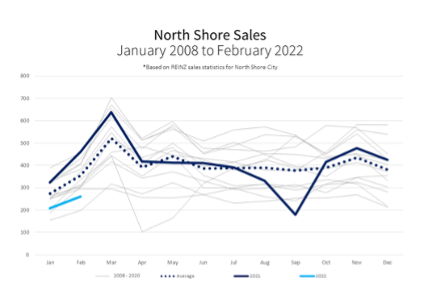
Last week the Government announced changes to the much talked about CCCFA rules (Credit Contracts & Consumer Finance Act). Whilst these were significantly tightened less than 4 months ago there has been ample commentary and complaints that borrowers were being turned down for loans due to spending habits like takeaways. These changes are likely to come into effect in June and particularly benefit first home buyers.
The market continues to search for its new norm. Some exceptional results were achieved in the Harcourts Cooper & Co virtual auction room, where last week over 1,500 people tuned in to watch 50% of the properties sell under the hammer. Demand remains, yet the choice for buyers is up with more stock on the market.
Market update for North Shore market based on REINZ market statistics for February 2022, released 14th March 2022.
